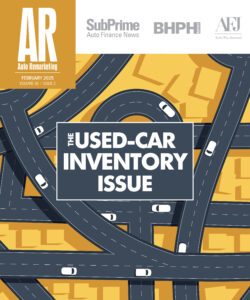5 Essential Truths About Dealership Marketing

If you’re looking to get a dealer riled up, just ask him about his marketing plan. Here’s a quick sample of what I hear every day: “The more I put into marketing, the less I get back.”
“Don’t tell me to invest more in marketing. Not until I see some kind of return.”
“No one’s responding to anything. I’m just sending messages into the ether.”
I get how they feel, really. No dealer can stomach the idea of wasting time or throwing money down the drain.
The thing is, you don’t have to increase your spend, your resources or your team size to get the results you need to settle your stomach. You just have to market more effectively — and by that I mean more personally and more strategically.
And you should start right now, because if there’s one thing I’ve learned in 10-plus years in the business; it’s that the best marketers make the best dealers.
Here’s how I think about it — marketing to your customer base is a large-scale version of what you already do best: Connecting with people. Making people feel important. Feel heard. Like their needs are understood. And like you want them to end up with the vehicle or the service that suits their unique needs. That’s how you’d feel about a customer standing in front of you right now.
Marketing is just a matter of making hundreds and thousands of those connections at the same time, between your many dealership departments and your very diverse customer base. Hundreds and thousands of connections that can add up to one big difference in your return. I’d say that’s reason enough to make some changes in your strategy and your tactics.
Sound like a huge undertaking? It’s actually easier than you’d think, and I’ve seen firsthand how effective marketing can be for dealerships that do it right. Greg Jensen, GM of Kocourek Chevy, came to me looking for a way to get more pointed messages to more of his customers, and he quickly took to the idea of segmenting the database within his CRM. He couldn’t believe the return he saw.
“I was actually able to increase my conversions significantly — and got significantly better results,” he told me recently. “Marketing to individual audience segments works. I’ll never send another mass communication again.”
And that was just the start for Greg. The extent of your success depends on how quickly you embrace what I consider to be the five most important truths in automotive marketing, and I’m going to talk you through them step by step:
Every Connection Counts.
I’m starting with the basics. A conversation, call, click, or any kind of contact with any level of interest from a prospect needs to be captured because it could be your next sale. It may sound obvious, but a lot of dealers lose track of (or don’t track at all) important opportunities because they seem premature, or because the particular department a prospect communicated with wasn’t the department that could meet that prospect’s immediate needs.
But all prospects need to be marketed to, wherever they are in the buying cycle, so make sure all prospects are in your CRM and that your CRM is visible to every department that interfaces with them.
No Two Customers Are The Same
The only thing your prospects and customers have in common is that they all belong in your database. Once they’re there, focus on what makes them different, and segment them according to those differences. Where are they in the buying cycle?
Are they actively looking for a new vehicle? Just passively searching? How’s their equity?
Did they buy their current vehicle from you, or another dealer? Have they bought other products or accessories from you (your warranties, gap insurance and other add-ons)? Do they do service with you? And if so, what does their service schedule tell you about how soon they could go for a new car?
Nothing is more critical to your marketing strategy than segmentation, so start separating your fresh prospects from your loyal customers, your service regulars from your no-shows, and be ready to approach every segment differently.
It’s Time to Ditch The Blanket
When you’re looking at a segmented database, you’ll start to see why blanket marketing messages get ignored. Send one message to a thousand people and hundreds will ignore it. You simply can’t capture everyone’s attention the same way.
Send one message to each segment, and you’ll get your responses. Segmenting makes it easy for you to send reminders to loyal service customers, saving coupon distribution for those you’re trying to convert. It also makes it easy to specifically target op-code declines with offers that inspire a change of heart. And, when you’re falling behind on a specific sales goal, it’s easy to zero right in on the customers most likely to buy what you need to sell, and match them with incentives they qualify for.
You’ve Got to Take a Hint
Some customers just don’t like the phone. Some only like the phone. Some may like email in April and by May decide they only have time for a text. Either way, you have to “listen” to their cues, and change your outreach accordingly. This is another essential function of a good CRM — one that tracks device-specific responses and prompts you to change your tactics accordingly. If you know the surefire way to get through to them, why wouldn’t you use it exclusively?
Be Real About Your Reporting
Without the proper perspective on all your results, you won’t really know how well you’re performing as a marketer. The metrics you track should be as segmented as your customer base, and they should be prioritized according to their impact on your overall success. Response and conversion are most important, so make sure you’re knocking it out of the park there. But then go a little deeper. Are you monitoring engagement across the entire database, or across your newest prospects, the least likely to engage?
Are you looking at your overall close ratio, or at the close ratio within your loyal customers segment, where you’ll see the strongest showing? Are you factoring in regional differences between your rooftops, or the differences in marketing spend for higher-end vs. lower-end vehicles? Bottom line, know your benchmarks, which are as unique as your customers, and monitor them closely.
Believe me, I know what dealers are going through when they feel burned out on their marketing efforts. But I promise you, the results you’re after are in reach, and you can get there with a few simple shifts in your strategy.
Sean Stapleton is the vice president of sales for VinSolutions.

 View The Latest Edition
View The Latest Edition

